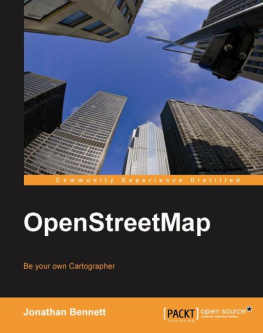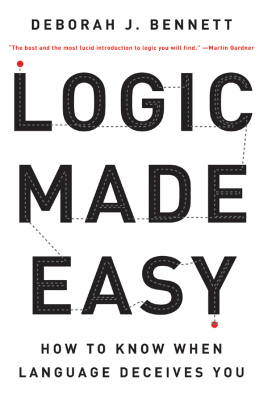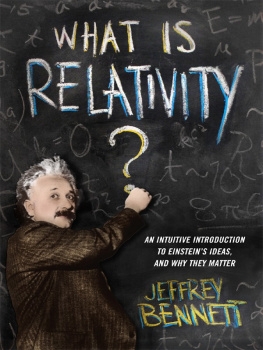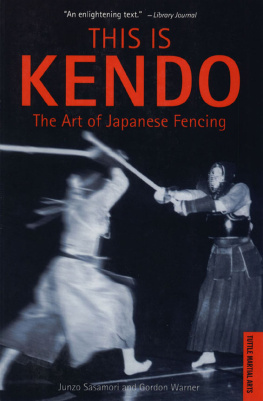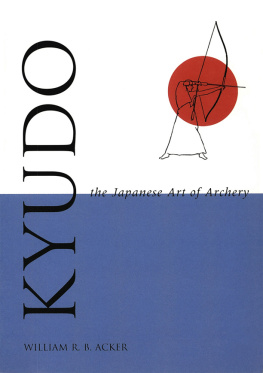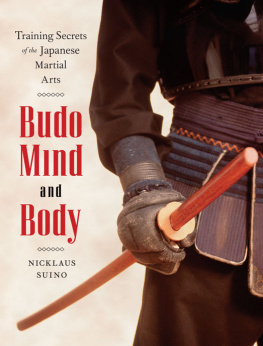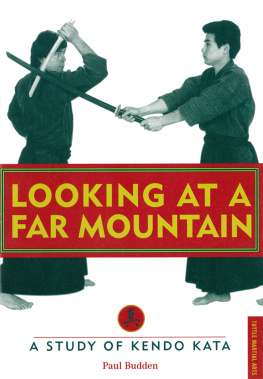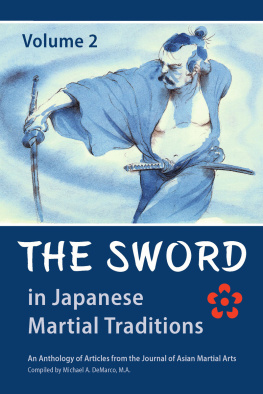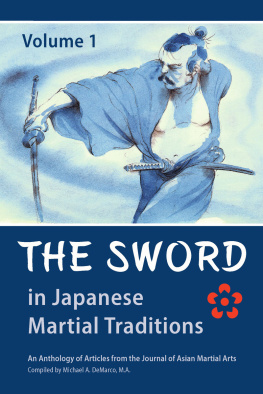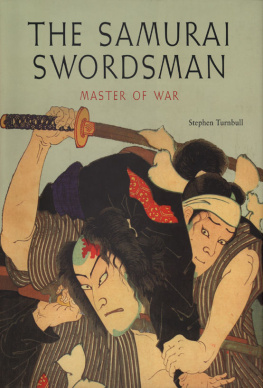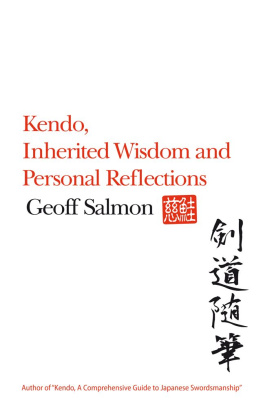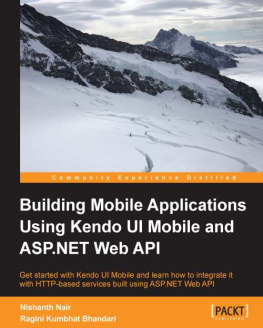ACKNOWLEDGMENTS
I have been involved in kendo and other budo disciplines as a practitioner and researcher for nearly three decades. The guidance I have received from many mentors and friends throughout my journey has been truly inspirational. I would like to especially thank the following people and organizations for their assistance and support over the years.
First, I cannot express enough thanks to Professor Kenneth Henshall at the University of Canterbury for patiently guiding me with crucial feedback and keeping my work on track. I offer my sincere appreciation to all of the staff members at the School of Languages, Cultures and Linguistics at the University of Canterbury for the learning opportunities I have enjoyed over the years. I am also indebted to Dr. Denis Gainty and Dr. Roy Starrs for their useful recommendations and honest critiques of my work. I would also like to pass on my particular thanks to the anonymous reviewers of this manuscript, as their comments were invaluable in straightening out many shortcomings in my knowledge. Likewise, I am eternally obliged to the fabulous staff at the University of California Press for believing in the merits of this book from the outset and so kindly escorting me down the road to publication.
Completion of this project could not have been possible without the ongoing willingness of the Nippon Budokan and the All Japan Kendo Federation to provide me with many of the documents quoted in this book. I have also benefited immeasurably from thought-provoking conversations with professors Uozumi Takashi at the Open University of Japan, ya Minoru at the International Budo University, Nakajima Takeshi at Kokushikan University, Nagao Susumu at Meiji University, Nakiri Fuminori at the Japanese Academy of Budo, Murata Naoki at the Kdkan, boki Teruo at Saitama University, Sakai Toshinobu at the University of Tsukuba, Nakamura Tamio at Fukushima University, Honda Star at Fukuoka University of Education, and Sakud Masao and Kanzaki Hiroshi at the Osaka University for Sport and Health Science. My two academic mentors in Japan, Yamaori Tetsuo, formerly at the International Research Center of Japanese Studies, and Sonoda Minoru at Kyoto University, opened my eyes to the religious and spiritual culture of Japan. Their teachings continue to have a profound effect on my outlook on life, as does the sage guidance of kendo master, the late Inoue Yoshihiko. In a similar vein, I am beholden to kendo teacher Hayashi Tatsuo, for his friendship inside and outside the dojo; Kimura Yasuko, ske of Tend-ry; Watanabe Tokiji and Mori Akira of Kashima Shinden Jikishin Kage-ry kenjutsu ; and Yonemoto Masayuki, Yamaguchi Remi, Okuura Ayako, Takahashi Hideaki, Eto Yoshihisa, Sato Nariaki, Takahashi Toru, Shigematsu Kimiaki, Dr. Miyasaka Masayuki, and Miyazaki Masayoshi. I will always be grateful for the great kindness of Hashimoto Kumiko, Nagahama Fumiko, and Tamaki Katsuko of the International Naginata Federation.
My Kendo World and other expat budo friends have, through mutual spurring or goading, always been a source of stimulation, making life in Japan much more gratifying. In particular, I would like to thank Michael Ishimatsu-Prime, Tyler Rothmar, Trevor Jones, Bryan Peterson, Jeff Broderick, Shishikura Kan Masashi, Hamish Robison, Michael Komoto, Dr. Lachlan Jackson, Antony Cundy, Randy Channell, Dr. Sean OConnell, Greg Robinson, Steven Harwood, Duncan Robert Mark, Dr. Stephen Nagy, Dr. Mark Meli, Dr. Kate Sylvester, Arpad Macksay, Brett Smith, Paul Budden, Geoff Salmon, Jeff Marsten, and Frenchman extraordinaire Baptiste Tavernier.
My high school kendo club friends are still very much like family to me. As I allude to in the prologue, had it not been for their patience in teaching me about kendo and Japan, this book would never have been conceived. Similarly, I owe much to Okushima Yoshio and to the members of the Kyoto University kendo club for their succor; to Kawakami Takashi and the Kansai University kendo club, where I teach now; and to the International Budo University. The members of the New Zealand Kendo Federation have been particularly encouraging of my activities over the years, especially Graham Sayer, Ken Wells, Alan Stephenson, Bruce Middleton, Sue Lytollis, and Dr. Daryl Tong. Thanks are also due to my younger siblings, Dr. Blake Bennett and Imafuji Masahiro, for their enthusiasm and undying dedication to the promotion of kendo.
Likewise, I am eternally obliged to the fabulous staff at the University of California Press for believing in the merits of this book from the outset and so kindly escorting me down the road to publication. In particular, acquisitions editor Reed Malcolm, production editor Dore Brown, copyeditor Genevieve Thurston, and indexer Alexander Trotter were enormously patient and always supportive.
During the course of writing this book, I received much-appreciated assistance from the Japan Foundation, Tozando, OBSERAI, the Kendo Nihon and Kendo Jidai magazines, and, of course, my place of employment, Kansai University. Thank you as always to Mum, Dad, Rhondda, and Oscar. This is what I have been doing all of these years. Finally, I would be remiss if I did not acknowledge the innumerable sacrifices made by my wife, Yoko, especially as she is the one with the unenviable task of washing my sweaty, malodourous gi after training, and does so without so much as a complaint.
Alexander Bennett
Kyoto, September 13, 2014
CONVENTIONS
Japanese words and expressions have been divided into their most logical semantic components to assist reading and correct pronunciation. Japanese terms have been romanized according to the Hepburn system and italicized. Long Japanese vowel sounds have been approximated using macrons. Macrons are used in most Japanese terms, except for commonplace names and organizations that have official English titles without macrons. Terms found in Webster s Collegiate Dictionary, such as kendo, budo, and bushido, are written without macrons or italics.




